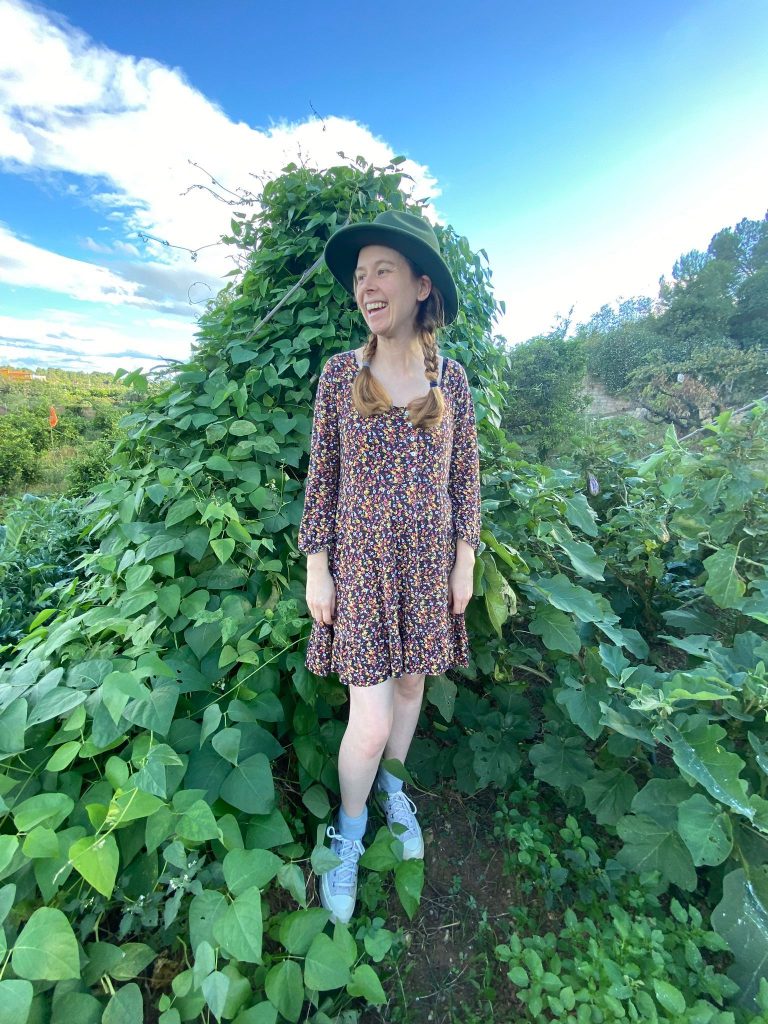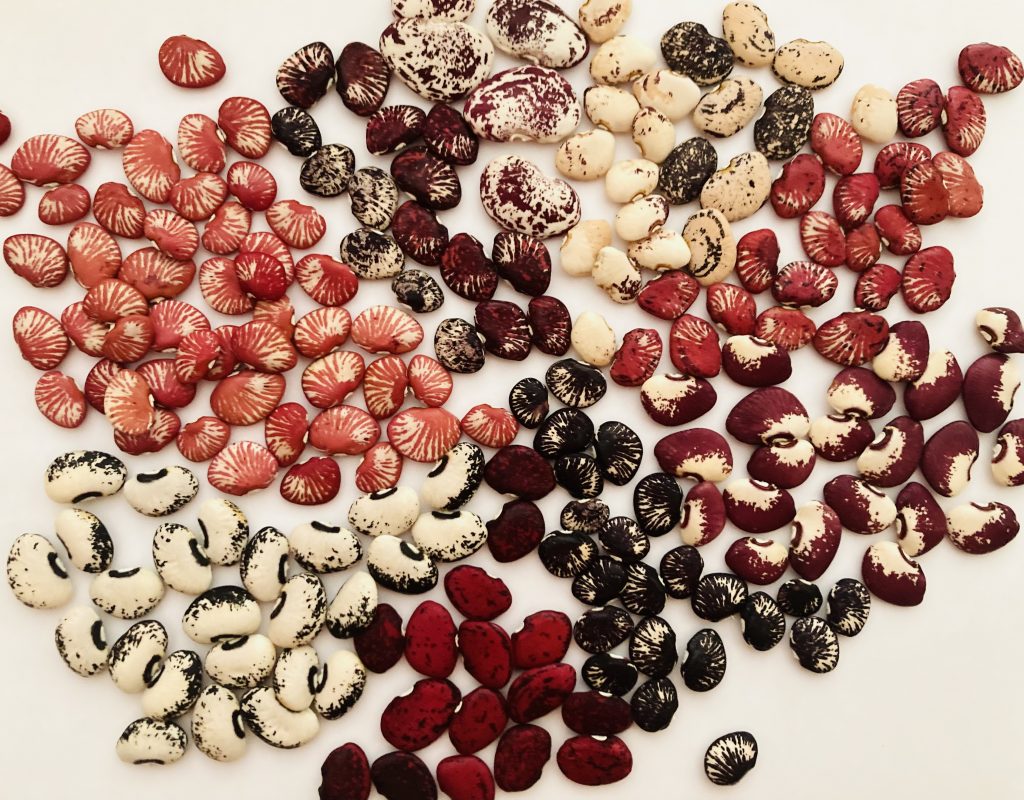
Please introduce yourself and tell us about how your work relates to legumes. How did you first fall in love with legumes?
Hi, my name is Nitya and I’m a New Zealander living in Valencia, Spain. Together with my husband, we have a small farm where, among other things, we grow many kinds of beans. It started as a small thing when I got hold of a collection of colourful beans, but then I got addicted!
In English, we go by the name Beany Things, and in Spanish, we are Los Alubiales, which is an old word meaning ‘a field planted with beans’ – kind of like a bean orchard. It sounds very bucolic!
At the moment, we are focused on finding, growing, and sharing the best bean varieties, not only for our climate, but also for other European climates. For example, I would like to make a hot weather collection, a short summer collection, a drought-resistant collection, etc.
Another of our focuses is on Lima beans, a traditional Valencian crop. Aside from the old Valencian varieties, we grow many other colourful ones and hope to promote them as a food source that is especially suited to our Mediterranean climate.
Can describe a project that you’ve worked on recently that you’ve been excited about?
At the moment, our most exciting project is one aimed at finding the most beautiful beans, and those which maintain their colours well, in order to try and make jewellery and other decorations from them as a way to promote bean diversity. Lima beans are especially suitable for this, but so are some other common beans. This is a fun project, as it combines gardening and art.

When it comes to legumes, what do you think are the biggest challenges a) for producers and b) for consumers?
Regarding producers, perhaps finding the best beans suitable for them, outside of the most common varieties. They aren’t hard to grow, but picking them can be time-consuming!
For consumers, I think a lot of people aren’t accustomed to cooking beans themselves. My piece of advice is to get a pressure cooker. Then you’ll no longer think of beans as something slow and tedious to cook. After soaking, you can get them cooked in just 15 minutes in a good pressure cooker, and if you want, can add other vegetables or grains to make a very fast, nutritious meal.
What facts about legumes do you think are useful in promoting them?
I find that promoting their beautiful side helps to attract attention to other aspects such as their health benefits, benefits to the soil, etc.
Do you have a favourite legume? If so, why?
That’s a tough one! I really like the beans of the Phaseolus coccineous type (runner beans) for their amazing flowers and their large, colourful beans. Unfortunately, this also happens to be the hardest bean variety to grow in my climate. But then again, Lima beans win for the patterns on their seeds. For taste, I tend to like black and red beans more than white ones. And for practicality, mung beans are a super-fast, tasty, and practical option when you need to make a one-pot meal after a long day in the garden. So I guess I don’t have a favourite, but I do have favourite uses for each bean variety.
Follow Beany Things on Instagram, visit their website, and take a look at their beans for sale on Etsy.



